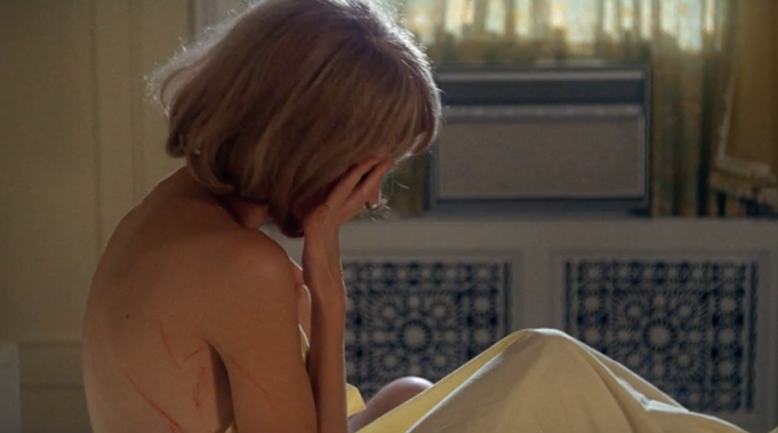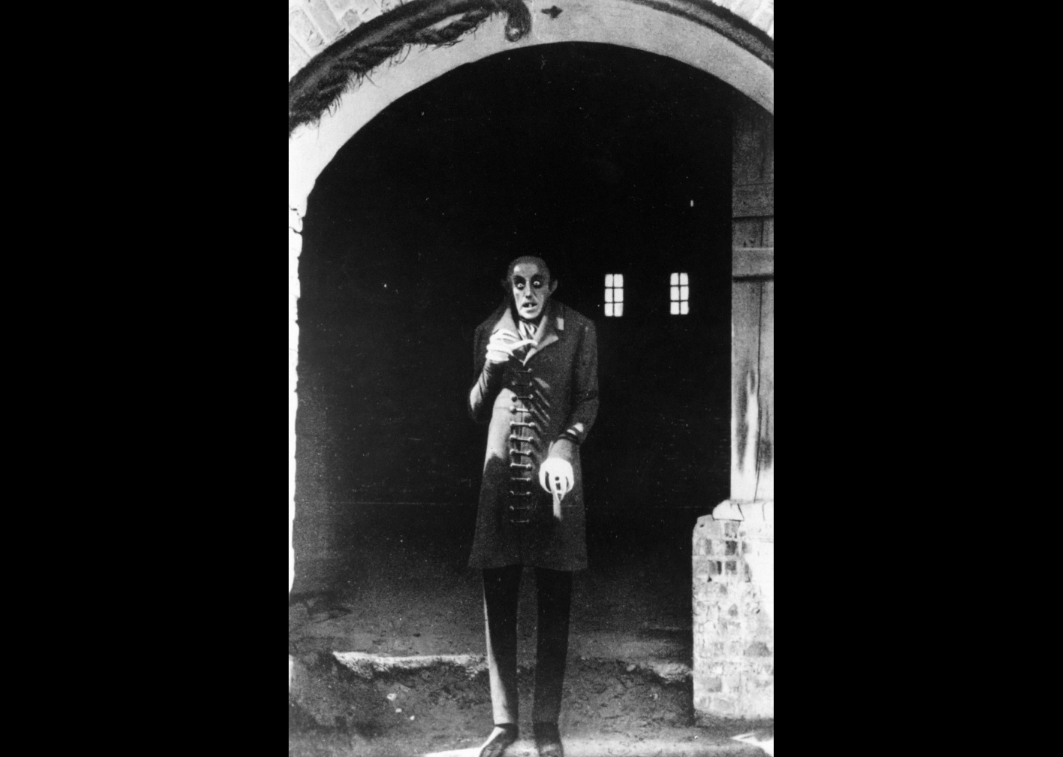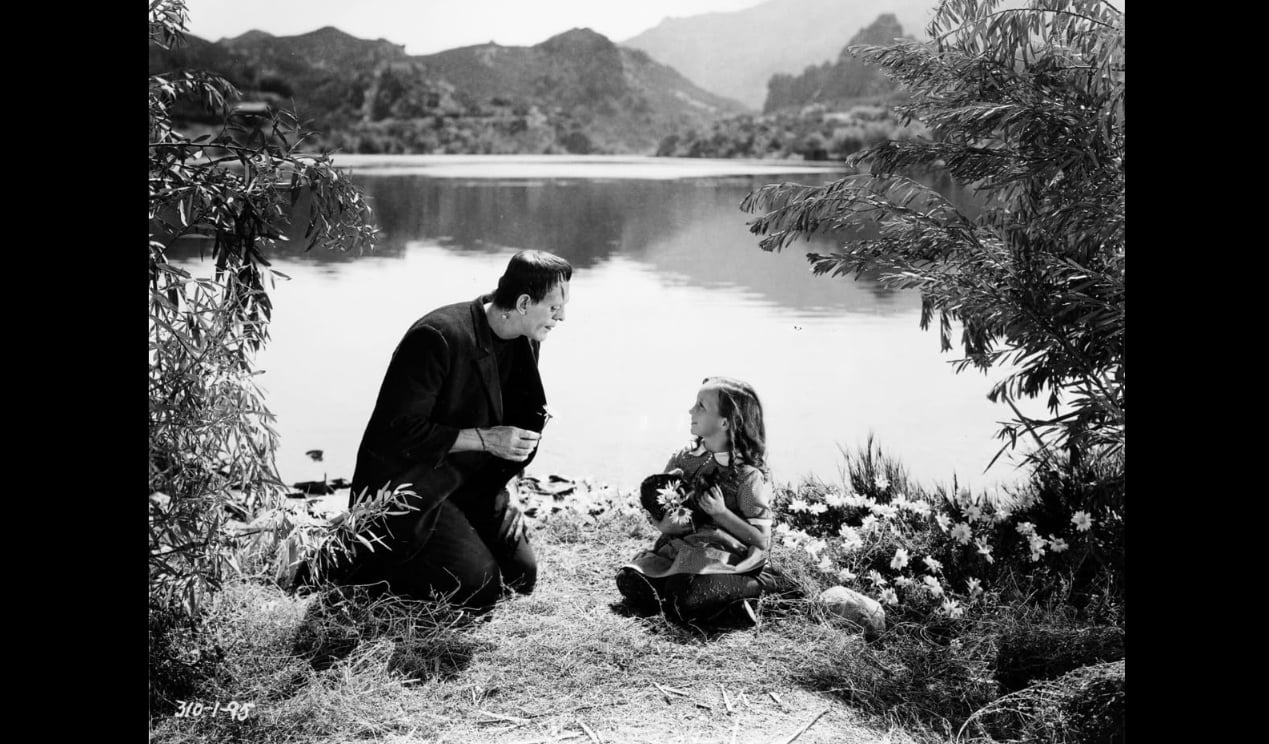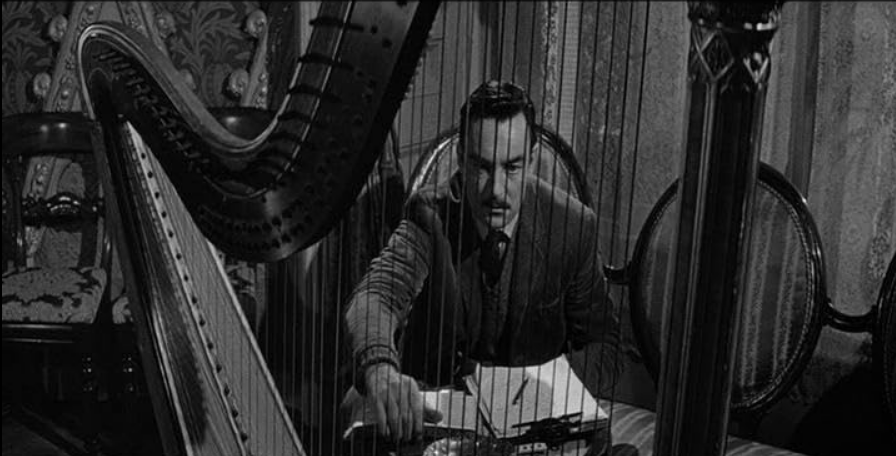With Halloween just around the corner, the craving for a good scare is pretty much a seasonal tradition. While modern horror films offer plenty of that—thrills and all—we figured we’d honor the tradition with cinematic titans who built the genre from the ground up.
These are the masterpieces that, decades later, continue to terrify audiences with their craft and psychological intensity, proving that true horror isn’t about fleeting jump scares, but about the slow-burning dread that lingers long after the credits roll.
In that spirit, let’s delve into fifteen legendary vintage horror films that have earned their permanent place in cinematic history.
1. Psycho (1960)

Alfred Hitchcock’s masterpiece, Psycho, redefined the boundaries of horror cinema with its unconventional narrative structure and psychological complexity. The film follows Marion Crane (Janet Leigh), whose fateful decision to seek shelter at the isolated Bates Motel during a thunderous night leads to one of cinema’s most shocking moments. Under the seemingly benign facade of the motel’s proprietor, Norman Bates (Anthony Perkins), lurks a darkness that would forever change the landscape of horror films.
The now-legendary shower scene, orchestrated with Bernard Herrmann’s spine-chilling violin score, stands as a testament to Hitchcock’s unparalleled mastery of suspense. By daring to eliminate his lead character midway through the film, Hitchcock shattered conventional storytelling norms and created a new template for psychological horror. The film’s enduring impact is reflected not only in its near-perfect 97% critic score on Rotten Tomatoes but also in its continued ability to unsettle audiences decades after its release, proving that true terror lies not in the supernatural but in the depths of the human psyche.
2. Night of the Living Dead (1968)

George Romero’s Night of the Living Dead shaped the zombie genre by establishing the mythology that would influence so many zombie films that followed. With its moody lighting, complex character dynamics, and tragic storyline, every element of the film comes together seamlessly. Night of the Living Dead also set a high standard for social commentary within the horror genre, addressing the tumultuous political climate of 1968.
The film centers on seven people trapped in a farmhouse while being terrorized by flesh-eating ghouls, but zombies are not their only problem. Tension arises among the group, particularly between Ben (played by Duane Jones) and Harry Cooper (Karl Hardman), who face constant conflict over leadership and survival strategies.
Though Romero maintained he cast Jones simply because he gave the best audition, Ben’s tragic end, where he was shot by a white sheriff who mistakes him for a zombie, became a powerful commentary on race in America. The film’s masterful execution and lasting impact have earned it a well-deserved 95% critic score on Rotten Tomatoes.
3. Dracula (1931)

Before Bram Stoker’s Dracula (1992 film), there was Tod Browning’s 1931 adaptation that set the gold standard for supernatural terror. Bela Lugosi’s mesmerizing performance as the Transylvanian Count, with his hypnotic stare and distinctive Hungarian accent, didn’t just bring Bram Stoker’s vampire to life—the actor’s portrayal established the vampire archetype that continues to influence modern adaptations today. The film follows the Count’s sinister journey from his castle to London, where he sets his sights on the innocent Mina Seward, played by Helen Chandler.
Dracula (1931) also paved the way for other classics, like Frankenstein (1931) and The Wolf Man (1941), bringing horror to the forefront of American entertainment and establishing Dracula’s status as a cultural icon. The film currently has an impressive 96% critic score on Rotten Tomatoes.
4. Eyes Without a Face (1960)

Georges Franju’s haunting Eyes Without a Face is a testament to horror cinema’s ability to blend beauty with macabre. The film is centered around Dr. Génessier (Pierre Brasseur), a brilliant but deranged surgeon consumed by guilt and obsession after causing a car accident that leaves his daughter Christiane (Edith Scob) horrifically disfigured.
His desperate attempts to restore her face through grafting procedures create a narrative that walks the delicate line between tenderness and terror. The film’s power lies not just in its shocking surgical scenes, which were groundbreaking for their time, but in Edith’s mesmerizing performance as Christiane. Behind her expressionless mask, Scob captures the essence of isolation and yearning, creating what critics have aptly dubbed a ‘beautiful nightmare.’
Shot in stunning black-and-white cinematography that emphasizes both the clinical sterility of medical procedures and the gothic atmosphere of moral decay, Eyes Without a Face continues to captivate audiences, earning an impressive 97% critic score on Rotten Tomatoes.
5. Freaks (1932)

Tod Browning’s 1932 magnum opus Freaks is one of cinema’s most daring and controversial horror films. It features an authentic cast of actual carnival performers, including the conjoined Hilton sisters, the Earles siblings, and Johnny Eck, known as the “half-boy.”
The story unfolds when a beautiful trapeze artist named Cleopatra (Olga Baclanova) seduces and marries a little person, Hans (Harry Earles), intent on poisoning him for his fortune. The film’s most notorious sequence—the carnival performers’ revenge that transforms Cleopatra into the grotesque, legless, tarred-and-feathered ‘Chicken Lady’ — proved too shocking for its time and was heavily censored.
This controversy, coupled with severe critical backlash, effectively ended Browning’s promising directorial career. Yet, time has vindicated this bold piece of filmmaking, now celebrated with a 95% critic score on Rotten Tomatoes for its portrayal of disability and its stark examination of who the real monsters are in society.
6. The Shining (1980)

Stanley Kubrick’s movie adaptation of Stephen King’s novel The Shining, though initially receiving mixed reviews and even Razzie nominations, is now often hailed as one of the greatest horror films of all time. The psychological thriller weaves supernatural elements with human darkness, creating an atmosphere of mounting dread that has captivated audiences for generations.
Jack Torrance (Jack Nicholson) is a recovering alcoholic and struggling writer who accepts a position as winter caretaker at the isolated Overlook Hotel. Accompanied by his wife Wendy (Shelley Duvall) and son Danny (Danny Lloyd), who possesses mysterious psychic abilities, Jack unknowingly leads his family into a labyrinth of terror. As winter’s isolation tightens its grip, the hotel’s malevolent forces begin to prey on Jack’s fragile psyche, transforming a father’s inner demons into very real threats against his own family.
Kubrick’s meticulous direction, combined with Nicholson’s transformative performance and Duvall’s raw portrayal of maternal desperation, elevates The Shining beyond conventional horror. While critics initially gave it a modest 83% on Rotten Tomatoes, audiences have long recognized its brilliance with a 93% approval rating.
7. The Exorcist (1973)

The Exorcist taps into viewers’ primal fear of invincible forces through the haunting story of Regan (Linda Blair), whose possession by a demonic entity transforms her from an innocent child into a vessel of pure evil. In her desperate quest to save her daughter, Chris (Ellen Burstyn) turns to two Catholic priests, culminating in a harrowing exorcism performed by the experienced Father Lankester Merrin (Max von Sydow).
The powerhouse performances by Blair, Burstyn, and Sydow, combined with groundbreaking special effects, create an atmosphere of unrelenting dread that lingers in viewers’ minds long after the credits roll.
The film’s methodical pacing and building tension culminate in some of horror cinema’s most shocking and iconic sequences, cementing The Exorcist’s position as one of the most influential and deeply unsettling films ever created. While its Rotten Tomatoes critic score stands at 78%, the higher audience approval of 87% reflects its enduring impact.
8. The Mummy (1932)

The Mummy is arguably one of the creepiest and most beautifully executed horror films, thanks to its chilling visuals, skillfully created using only makeup and camera tricks. This cinematic gem weaves a mesmerizing tale of love, death, and ancient curses through the story of Imhotep, an Egyptian priest portrayed brilliantly by Boris Karloff.
When archaeologists unwittingly awaken this millennia-old being, who was entombed alive for attempting to resurrect his beloved Anck-es-en-Amon, they unleash a force that bridges the gap between the ancient world and modern civilization.
Under Karl Freund’s direction, the film bathes its narrative in shadows and dreamlike sequences, while Karloff’s performance strikes an unforgettable balance between menacing horror and tragic romance. This artful combination of elements has earned the film its rightful place among horror’s most enduring classics, reflected in its impressive 89% critic score on Rotten Tomatoes.
9. Halloween (1978)

In addition to launching Jamie Lee Curtis’s career as one of Hollywood’s most iconic scream queens, John Carpenter’s Halloween is a masterclass in weaving together suspense and eerie atmospheres into a tapestry of terror. The film set the standard for future slashers, establishing many genre conventions while prioritizing tension over excessive gore.
The film centers around Michael Myers, a silent, relentless figure who escapes from a mental institution to stalk the streets of his hometown, becoming the archetypal masked killer that countless films would later emulate.
The film’s brilliance lies not in gratuitous gore but in Carpenter’s direction, which employs haunting music, strategic shadows, and methodical long takes that make viewers feel as though they are being watched alongside the movie’s characters. It is these very elements that establish Halloween as a cornerstone of horror cinema, and the film’s 97% critics’ score on Rotten Tomatoes is a testament to that.
10. The Omen (1976)

While religious horror may have lost its edge in the modern era, when The Omen was released, it surprised audiences with its complex story and outstanding performances, particularly by the legendary Gregory Peck as the beloved father figure, Robert Thorn.
Unbeknownst to his wife, Katherine (Lee Remick), Robert adopted a child, Damien (Harvey Spencer Stephen), after their own died shortly after birth, unknowingly bringing home the Antichrist.
Directed by Richard Donner and written by David Seltzer, the film features impressive pacing that is relatively surprising for a movie released nearly five decades ago. From its chilling atmosphere to Jerry Goldsmith’s haunting score—especially the iconic Ave Satani, meaning ‘Hail Satan’—the film creates a gripping sense of suspense, earning an impressive 86% critic score and 81% audience approval on Rotten Tomatoes.
11. Rosemary’s Baby (1968)

Roman Polanski’s Rosemary’s Baby, based on Ira Levin’s novel, weaponizes the familiar, turning the promise of new life into a vessel for slow-burning, psychological dread. The film slowly but surely builds its terror not with ghosts or monsters, but within the seemingly benign walls of a New York City apartment building.
As the young and naive Rosemary Woodhouse (Mia Farrow) becomes increasingly isolated during her mysterious pregnancy, the film preys on deep-seated anxieties of urban paranoia, gaslighting, and the loss of bodily autonomy. Farrow’s fragile yet determined performance anchors the film, making her mounting suspicion of her overly solicitous neighbors and ambitious husband feel chillingly plausible.
Polanski allows the horror to fester in the unseen and the unsaid, leaving the audience to question reality alongside Rosemary. Its legacy lies in its sophisticated, adult approach to horror, earning a near-perfect 97% critic score on Rotten Tomatoes for proving that the most terrifying conspiracies are the ones hidden in plain sight.
12. The Texas Chain Saw Massacre (1974)

Where many of its contemporaries relied on gothic atmosphere, Tobe Hooper’s The Texas Chain Saw Massacre drags horror into the blinding, grimy daylight of rural America. This raw-nerve classic follows a group of young friends who stumble upon a family of cannibals, unleashing a wave of chaotic and unrelenting terror. The film’s power comes from its documentary-style realism and its assaultive sound design, which transforms the buzz of a chainsaw into an instrument of pure, primal fear.
Despite its reputation for gruesomeness, the film is remarkably restrained in its on-screen gore, instead forcing the audience’s imagination to fill in the horrifying gaps. Gunnar Hansen’s performance as the hulking, skin-masked Leatherface created an entirely new kind of movie monster: not a supernatural entity, but a terrifyingly human product of isolation and madness. Its visceral intensity redefined the boundaries of horror, paving the way for the slasher genre and solidifying its status as a brutal classic with an 84% critic score on Rotten Tomatoes.
13. Nosferatu: A Symphony of Horror (1922)

Long before Bela Lugosi donned the cape, F.W. Murnau’s silent chef-d’œuvre Nosferatu gave cinema one of its first and perhaps most terrifying vampires. An unauthorized adaptation of Bram Stoker’s Dracula, the film follows real estate agent Thomas Hutter as he travels to Transylvania to sell a property to the eerie Count Orlok, only to unwittingly unleash a vampire’s curse of plague and death upon his coastal hometown and devoted wife, Ellen.
This cornerstone of German Expressionism—much like its contemporary, The Cabinet of Dr. Caligari (1920)—tells its story through a nightmarish visual tapestry of distorted shadows, unsettling architecture, and stark, high-contrast imagery that has influenced filmmakers for a century. Max Schreck’s portrayal of Count Orlok is the antithesis of the charismatic, aristocratic vampire. With his rodent-like features, clawed fingers, and stiff, lurking movements, Orlok is a creature of pestilence and shadow—a walking plague personified.
Murnau uses the camera not merely to capture action but to evoke a sense of deep, creeping dread that transcends the need for dialogue. As a foundational text of horror cinema, Nosferatu remains a chilling and visually stunning work of art, holding a remarkable 97% critic score on Rotten Tomatoes.
14. Frankenstein (1931)

Just months after Dracula introduced audiences to the suave vampire, James Whale’s Frankenstein gave them a monster born of tragedy and hubris. While the film is a landmark of Gothic horror, its enduring power lies in its profound sense of pathos. Boris Karloff, buried under Jack Pierce’s legendary makeup, delivers a nuanced and heartbreaking performance as the Creature, a being brought into a world that immediately fears and rejects him.
The film is a somber meditation on the consequences of playing God, with Colin Clive’s manic portrayal of Dr. Henry Frankenstein serving as a chilling warning against unchecked ambition. Whale’s direction combines atmospheric dread with moments of shocking violence—most notably the controversial scene where the Creature, in a moment of childlike innocence, accidentally drowns a little girl he has just befriended. The film pretty much cemented the image of the monster in the cultural lexicon and stands as a pillar of Universal’s classic monster movies, with a 94% critic score on Rotten Tomatoes.
15. The Haunting (1963)

Proving that the most terrifying phantoms are those that reside in the human mind, Robert Wise’s The Haunting is a masterwork of psychological suggestion. The film, an adaptation of Shirley Jackson’s 1959 novel, The Haunting of Hill House, follows a small group of individuals investigating Hill House, a sprawling mansion with a dark and violent history. Rather than relying on physical apparitions, Wise uses a deeply unsettling soundscape, disorienting camera angles, and ambiguous events to create an atmosphere of suffocating dread.
The true horror of the film is channeled through the fragile psyche of Eleanor Lance (a brilliant Julie Harris), a lonely woman who believes the house is communicating with her directly. The film expertly blurs the line between supernatural influence and Eleanor’s mental disintegration, making the audience question what is real and what is imagined.
By refusing to show a single ghost, The Haunting became the definitive haunted house film for a generation, influencing countless stories that understand true terror is found in what is heard, felt, and feared, but never seen. Modern television would famously return to Hill House, but never with this film’s terrifying restraint. Its subtle genius is reflected in its 87% critic score on Rotten Tomatoes.

